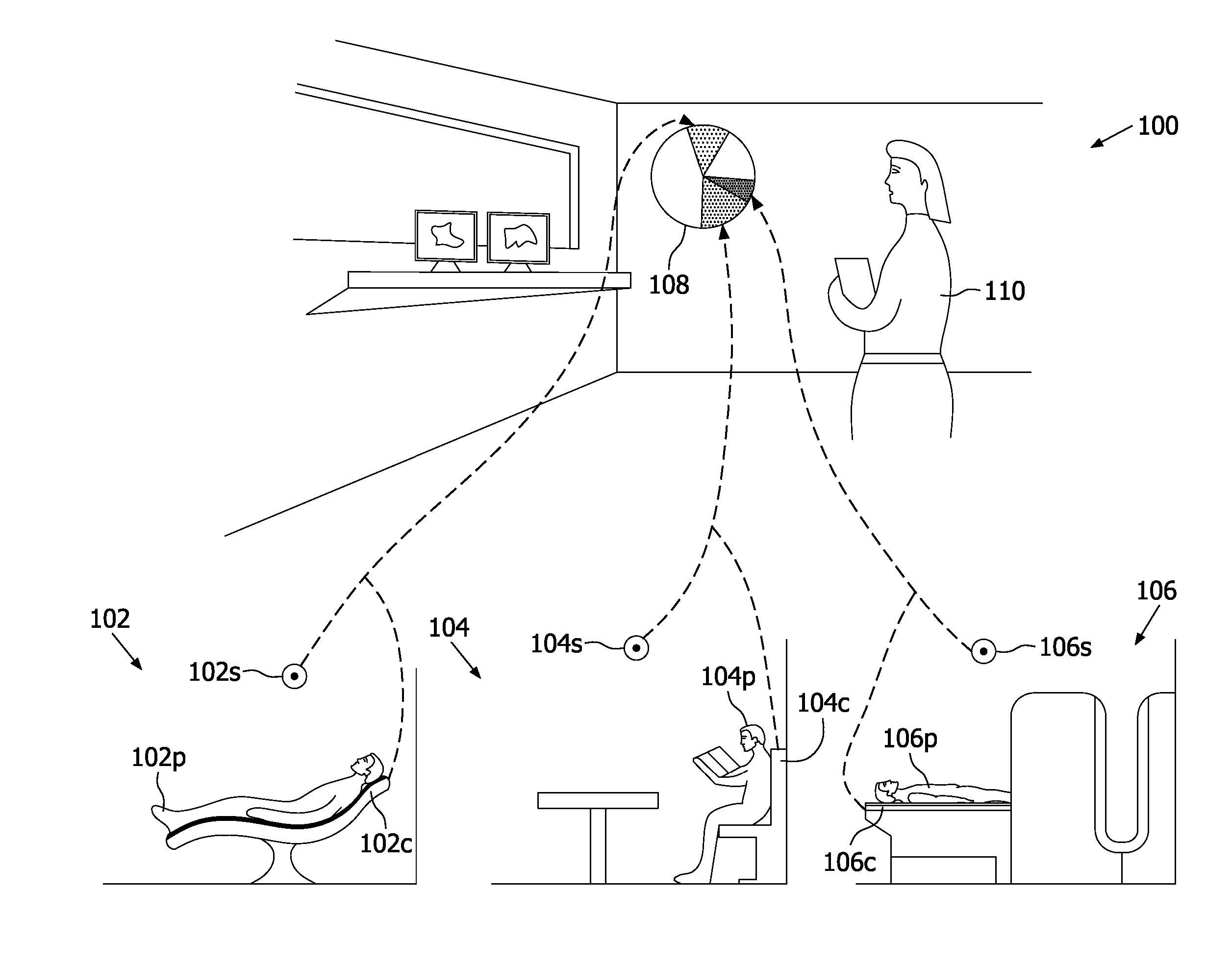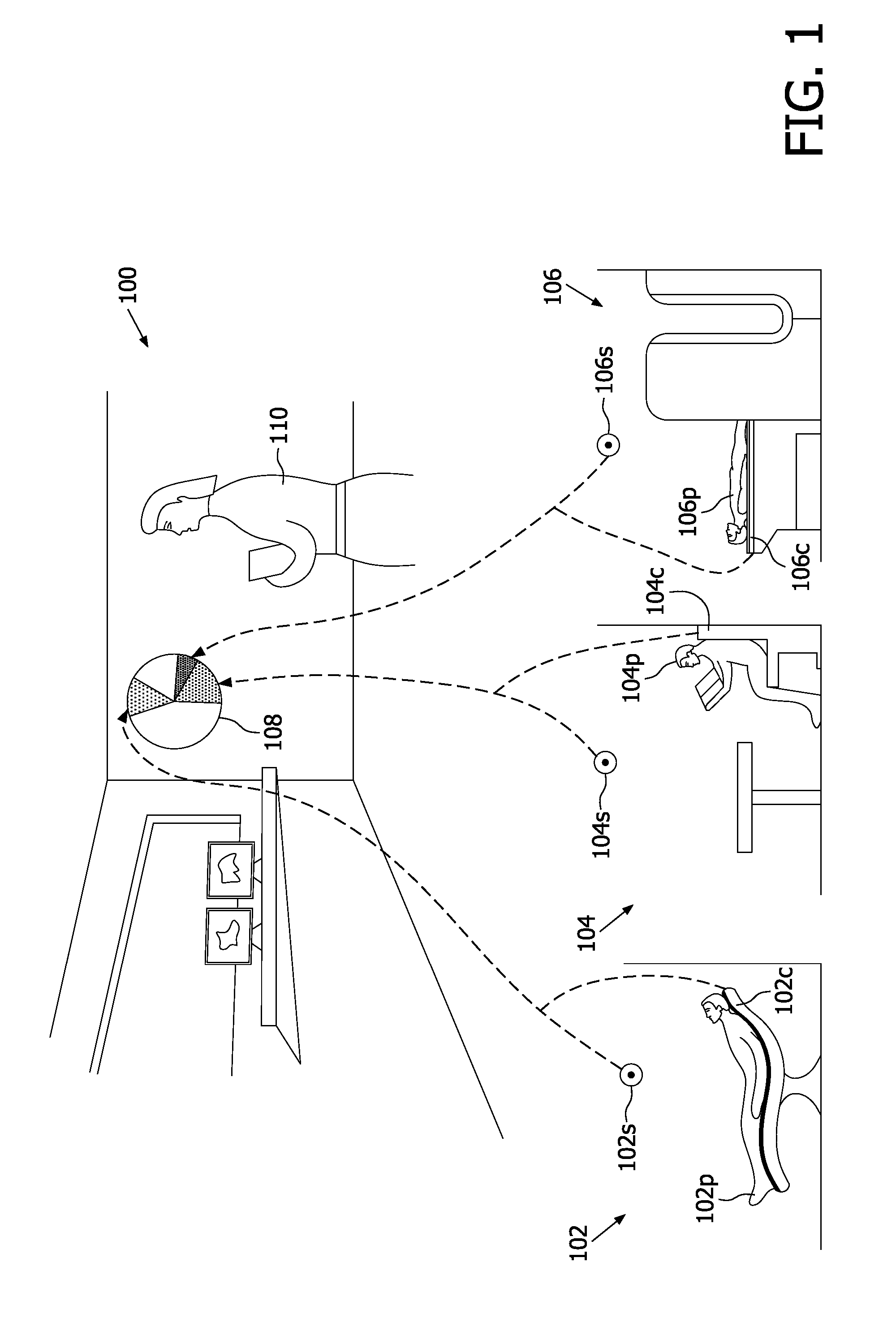Time management in a healthcare facility
a healthcare facility and time management technology, applied in the field of healthcare, can solve the problems severe degradation of image quality, and difficult to stay still during a procedure lasting such a long time, and achieve the effects of increasing the risk of physical movement, increasing radiation exposure to the patient, and increasing the cost of the procedur
- Summary
- Abstract
- Description
- Claims
- Application Information
AI Technical Summary
Benefits of technology
Problems solved by technology
Method used
Image
Examples
Embodiment Construction
[0020]FIG. 1 shows a healthcare facility comprising a monitoring room 100, an uptake room 102, a waiting room 104, and an imaging room 106. A first sensor 102s in the uptake room 102 detects or monitors an environmental parameter in the uptake room 102, while a second sensor 102c detects or monitors a physiological parameter of a first patient 102p. Similarly, a third and a fourth sensor 104s, 104c monitor an environmental parameter in the waiting room 104 and a physiological parameter of a second patient 104p, respectively, while a fifth and a sixth sensor 106s, 106c monitor an environmental parameter in the imaging room 106 and a physiological parameter of a third patient 106p, respectively. The various detected or monitored parameters are transmitted to a display station 108 in the monitoring area 100, where a caregiver 110 monitors the progress of the procedure.
[0021]In a specific embodiment, the caregiver 110 is able to monitor, at a glance, the status of multiple patients 102p...
PUM
 Login to View More
Login to View More Abstract
Description
Claims
Application Information
 Login to View More
Login to View More - R&D
- Intellectual Property
- Life Sciences
- Materials
- Tech Scout
- Unparalleled Data Quality
- Higher Quality Content
- 60% Fewer Hallucinations
Browse by: Latest US Patents, China's latest patents, Technical Efficacy Thesaurus, Application Domain, Technology Topic, Popular Technical Reports.
© 2025 PatSnap. All rights reserved.Legal|Privacy policy|Modern Slavery Act Transparency Statement|Sitemap|About US| Contact US: help@patsnap.com



